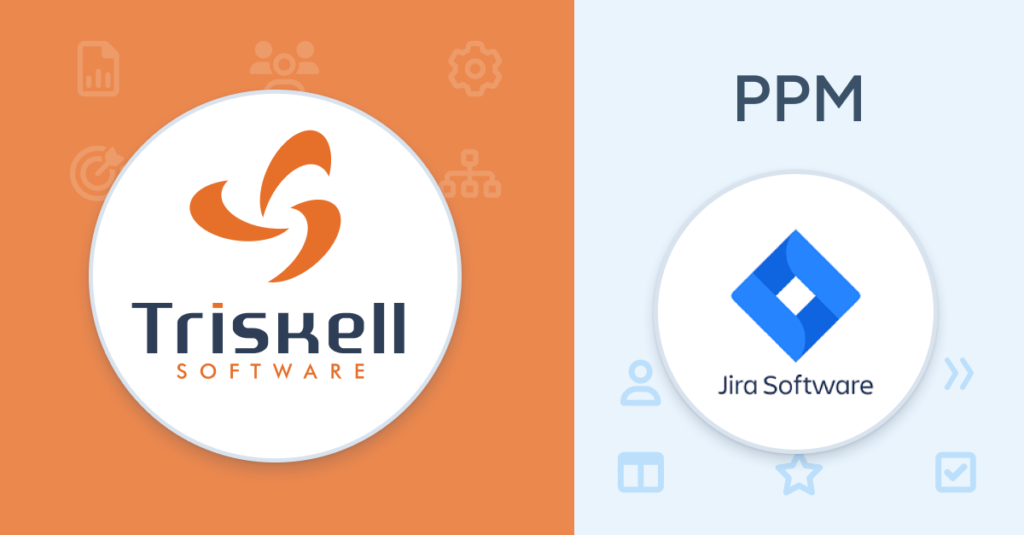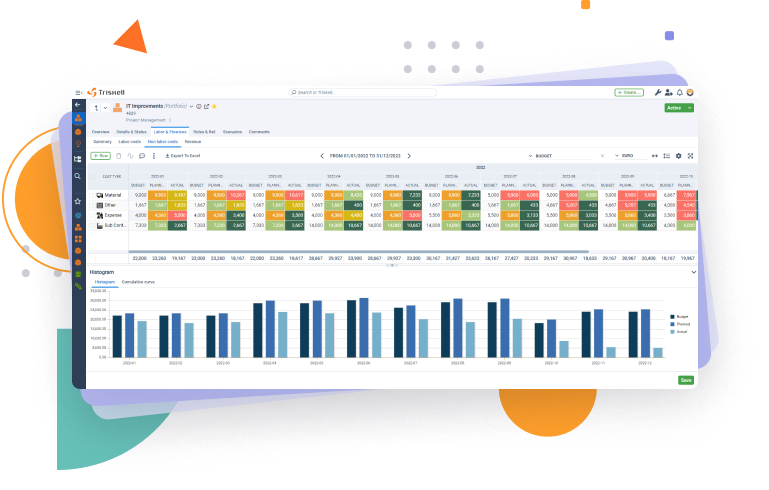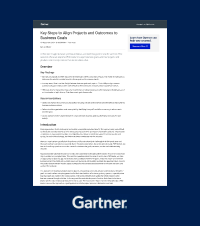
Jira vs Triskell: what´s the best option for Project Portfolio Management?
In this article, we compare in depth Triskell Software and Jira, two of the best software for Project and Portfolio Management.

Since time immemorial, having projects on time and on budget have been considered the most critical success factors in Project Management. However, the irruption of factors such as customer feedback, agile methodologies and market volatility has changed the rules of the game. What are the new success factors in Project Management?
It used to be that project success was based on one or more of three key project success determiners:
Sometimes quality may be included as another key project success determiner, but that also factors into customer satisfaction.
What we are – and should be – concerned about more lately is how our projects are contributing to the overall strategy and goals for the organization. Are we fitting the needs of the end user? Are we falling in line with the business processes of the organization? When the project is over, is the solution usable long-term in improving work and processes in the organization? How do we measure the project’s success or the final solution’s usefulness in the organization?

PROJECT PORTFOLIO MANAGEMENT
Achieve excellence in Project Portfolio Management
Learn more about Triskell’s PPM solutionS.
I led a proprietary software implementation project for a major US airline. The budget was originally $350k and that rose to $385k through change orders during the project. We went over budget and time on the project but neither were delivery issues. In the end, we delivered a great working solution configured precisely to what the airline originally wanted and needed… or thought they needed.
But 60 days out from implementation I was touching base with this project customer and learning that no one was using it yet. It was very disappointing and the feelings of success faded fast. It sure felt like those two weeks onsite over Christmas with my team working through development and solution performance issues were a waste of time!
How could we avoid a Project Management failure like this? How could we better ensure that what we are creating and producing is going to be what the customer and their end users really want?
Project Managers need to start considering these critical success factors in Project Management:
See how Triskell can drive strategic project delivery
Request a demo today and see how Triskell can help to optimize project selection, prioritize initiatives and ensure your projects deliver real business value.
Sometimes planning and executing a dog and pony show at rollout time will help ensure that the connection is secure between the delivery team, the end solution and the end user community. Hopefully, any issues with requirements vs. expected end solution functionality have been ironed out during User Acceptance Testing (UAT) but there are no guarantees.
Even with a signed-off UAT, there is no guarantee that the customer really knew exactly what they wanted, that you got everything “just right” and that it is performing 100% as expected.
A presentation of the final solution to a wider end-user community at – or just prior to – system rollout will further ensure that the customer is getting what they need. If any gaps remain, this is where they will be exposed, one or more change orders can be introduced and a final phase of add-on functionality can ensure 100% customer satisfaction and the proper fit to the organization’s strategy and goals.
Keeping the focus on the end-user community we can better understand if we are meeting their needs by allowing them to use the solution and run it through it’s paces. Does it perform as needed?
Sometimes, these key roles and individuals were overlooked or not properly tied into the requirements definition phase of the project. By using the solution, surveying the end-user community, and working to understand if or where any gaps still remain, we can be proactively responsive to the client’s true needs.
Keep in mind, if we are discovering gaps at the end of the project, the fix won’t be easy or cheap. It is our fault as a delivery team. Was it the customer who missed the requirements? That is going to be a determiner in any change order decisions because it will certainly have an effect on where any financial liability lies. But if it is missing critical functionality, then it will need to be resolved quickly.
Conducting lessons learned during the project or at the end of the project is a great way to understand how the customer feels about the project, the solution and the delivery team. Any issues or concerns should come out during this session.
I recommend conducting lessons learned during the project – at key deliverable phases rather than at the end of the project when it’s difficult to regroup the team members that are on to other projects and the client who is busy with the new solution or on to other responsibilities.
By performing lessons learned at several key points throughout the project, valuable information can be learned that will keep customer satisfaction high and allow the project team to take advantage of any feedback on the current project’s remaining phases as well as coming projects.
PPM SOFTWARE CHECKLIST
A Comprehensive buyer’s checklist for PPM Software
Use this quick checklist to compare potential modern PPM solutions in order to pick the best one for your organization.
The real issue here is… are we making our corporate life better with the project? Is it working as intended? Is it being used? Can we quantifiably measure its success, quality and usefulness? Yes, there are ways, but sometimes we have to be creative.
On-budget delivery does still matter. On-time delivery still matters as well. Customer satisfaction will always matter whether the project customer is internal to the organization or external. But there is more to worry about… or at least there should be.
Why traditional “on budget” and “on time” are no more relevant or enough? Aligning project management with strategic objectives is key to ensuring value delivery.
And the fact is that, as of today, Project Managers need to know and measure how and how much they contribute to the overall strategy. If the project does not add value and does not meet the needs of the business and customers, it’s doomed to failure.
A PPM software like Triskell with Project Portfolio Management and Strategic Portfolio Management capabilities will help Project Managers, Program Managers and Portfolio Managers to evaluate, plan and score all initiatives according to the organization’s objectives.
SUBSCRIBE TO OUR NEWSLETTER
Get stories like this in your inbox
Request a demo of Triskell Software
Want to learn more? Request a free demo of Triskell Software and you will discover the PPM software that best suits your business needs.

Here are some steps to promote strategic alignment:
Effective project success measurement goes beyond simply meeting deadlines and budgets. Here are some additional metrics to consider:
Several tools and techniques can support achieving critical success factors in project management:
Related Content

Jira vs Triskell: what´s the best option for Project Portfolio Management?
In this article, we compare in depth Triskell Software and Jira, two of the best software for Project and Portfolio Management.

IT Project Management: The ultimate handbook for leading all types of IT projects
Discover best practices for IT Project Management. Learn key frameworks, examples, challenges, and how to optimize IT project success.

10 Project Portfolio Management Trends for 2025
Discover how portfolio management will evolve in 2025 and how companies need to align execution and strategy to achieve its objectives.
Platform
Company
© 2024 Triskell Software. All Rights Reserved.
Legal Notice
Privacy Policy
Cookies policy
Quality Management and Information Security System Policy

We use technologies such as cookies to store and/or access device information. We do this to improve the browsing experience and to display (non-) personalized advertisements. Consenting to these technologies will allow us to process data such as browsing behavior or unique ID's on this site. Not consenting, or withdrawing consent, may adversely affect certain features and functions.

Key steps to align projects and outcomes to business goals
Many organizations struggle to align projects with business goals, often leaving project initiatives disconnected from desired outcomes.
This Gartner® report provides guidance to simplify project objective refinement, aligning projects with business priorities and ensuring measurable value.